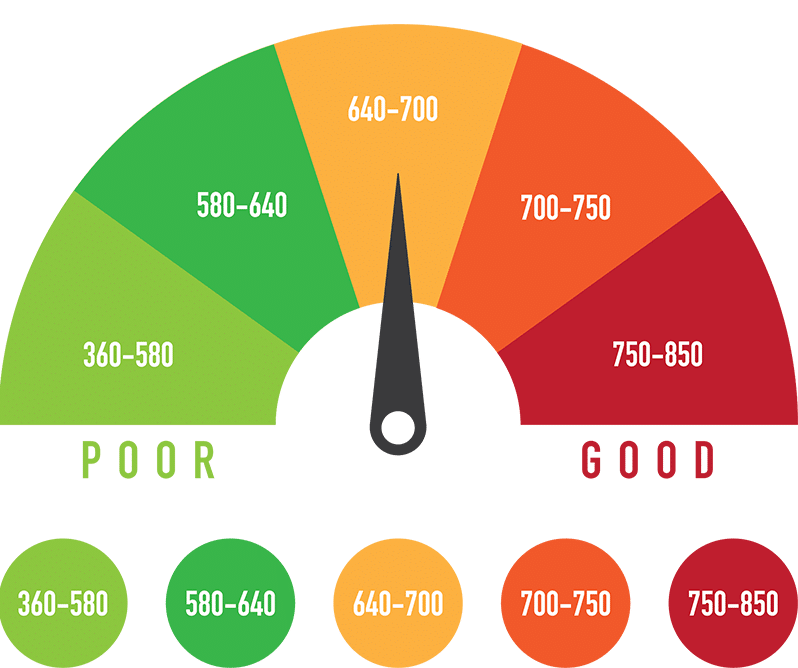Unless you come by a huge influx of cash either by winning the lottery or through an inheritance; a mortgage remains the most affordable way to own a home. Among the tools that lenders use to determine your eligibility for a home loan is debt-to-income ratio, or DTI.
The ratio is used to determine how much of your income can go towards monthly mortgage payments as compared to other monthly debts that your income settles. Read on to find out how to calculate DTI and what ranges are desirable according to the industry standards.
What is a Debt-to-income Ratio & How is it Calculated?
A debt-to-income ratio is a number used to measure a person’s ability to manage their debt. This number is calculated using two key pieces of financial information: your debt and your income. By taking your total monthly debt and your total monthly income, which includes any money earned prior to taxes and deductions, you can determine your debt-to-income ratio.
In another example where the total debts are higher than $1,500 and income is still $4,000, you see an increase in the DTI. If you have monthly debt payments equal to $2,000, and your gross monthly income equals $4,000, your debt-to-income ratio will be 50%.
STEP 1. Determine your monthly liabilities. These include:

Monthly Home-related costs – If it is your first mortgage this will be sum of all monthly expenses that go towards paying your rent. It has to be expressed as a monthly amount i.e. if you pay an annual sum then divide it by 12. Similarly if you pay it quarterly, divide by 4. Add in the proposed or expected monthly payment for the mortgage you are considering.
Also included in this will be other housing costs such mortgage insurance, real estate taxes and homeowner’s association payments. In case you are a homeowner in the market for a second mortgage, the monthly payments you make towards your first mortgage will constitute the cost.
Although you could be paying monthly for utilities like power and gas, they are not taken into account in this summation. Same goes for food, health and car insurances, phone bill, your taxes and cable bill.
Monthly loan payments – A sum of all monthly loans that are deducted from your pay and show on your credit report. These include monthly remittances towards car loan, student loan, credit union and personal bank loans.
Monthly credit card payments – This is the sum of minimum payments that you make for each credit card. It excludes credit card debt that you settle monthly in full.
Other monthly obligations – This could be any other line of credit that involves financing. Monthly child support or alimony payments fall under these obligations.
TIP: Monthly liabilities= (Home related costs + loan payments + credit card payments + others)
Step 2. Determine your monthly gross income
This refers to your total pay before any deductions are made or simply pre-tax pay. This comprises of;
- Basic wages or salary.
- Bonuses and commissions
- Alimony and or child support.
- Income from investments (must be verifiable via your tax returns)
Tip: If you draw a salary, bonus or commission annually then divide it by 12 to arrive at its monthly value.
How to Calculate the Front-end Ratio
This is the home-related costs divided by your monthly gross income. It shows the amount of monthly income that can be freed to service the house loan you propose to get. To put this into context, suppose your monthly gross income is $6,000 and total monthly home-related costs are $1,500.
Front-end DTI = ($1500/ $6000) * 100 = 25%
How to Calculate the Back-end ratio
When lenders speak of DTI, this is mostly what they have in mind. It’s a ratio that shows the amount of your income that goes towards settling all your debts. It’s the sum of all monthly debts divided by your monthly gross income. Suppose your total monthly liabilities (including home related costs) in the above example is $2500 then,
Back-end DTI= ($2500/ $6000) *100 = 41%
Standards for Debt-to-income Ratio
A low DTI means that you have more of your income left after paying bills. Back-end ratio of 36% and front-end ratio of 28% or below is considered favorable by most lenders.
Back-end ratios of between 36%-49% translate to less amount left to spend. Lenders will view you as a potential defaulter. You may have to contend with higher interest rates and huge down payments for your loan.
Anything higher than 50% puts you on the red. It means half of your pay is going toward debt payments leaving you with little to spend or even take up a new financial obligation. This greatly reduces your chances of landing a mortgage.
What is the Ideal Debt-to-income Ratio?
If you aren’t thinking about applying for an auto or home loan, opening a credit card account, moving into a new apartment, or doing anything else that requires someone to review your credit and finances, you may not care too much about your DTI. But when you are seeking credit, part of the application process may include a thorough review of your finances. Even though it will vary, every creditor and lender has certain criteria that applicants must meet in order to approve an application, so they might be interested in examining your DTI to determine if you should be approved.
Since this number gives insight into how you manage your debt, specifically your ability to repay your debt, the higher your DTI, the more likely you are to be denied. Creditors will look for borrowers who have a debt-to-income ratio no higher than 43%. This means that if your monthly income is $4,000, your total monthly debt payments should be equal to no more than $1,720. Although 43% is acceptable to most creditors, a lower DTI is even better.
Improving Your Debt-to-income Ratio
If your DTI is above 43%, you have the power to change it. Since your monthly debts and income are the two important factors used to determine your DTI, there are a number of ways you can lower your DTI and get in a better position financially.
If you want to improve your debt-to-income ratio, one thing you can do is reduce the total amount of debt you owe. If you have taken out a loan for $5,000, your monthly loan payment will be included in your debts used to calculate your DTI. By making extra payments on your loan, you will be able to pay off the loan faster and reduce the amount of debt owed.
Additionally, if you want to improve your DTI, you can also avoid adding to your current amount of debt or increase your monthly income by taking on a hiring paying full-time job, part-time job, or gig.



